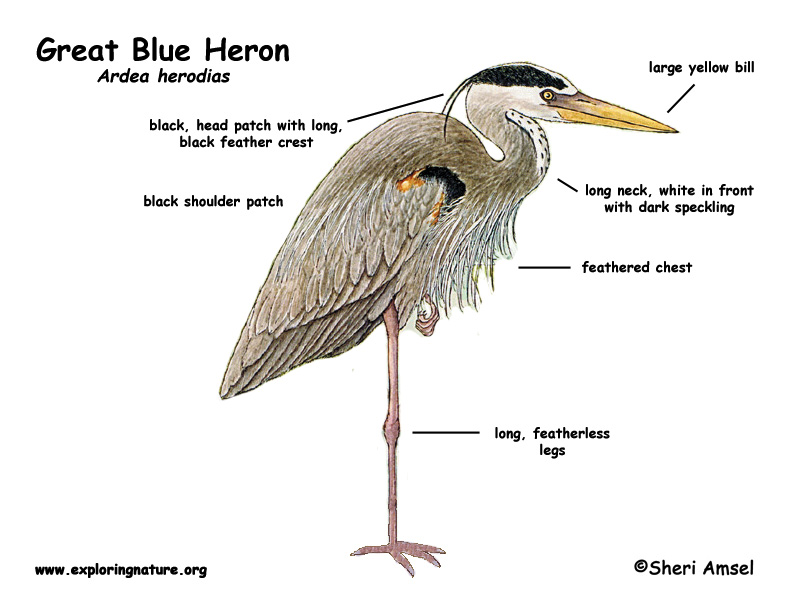

Winters from southern Canada south to South America. Breeds from Southern Alaska, across Canada, south through the U.S.
Located in marshes, by rivers, lakes, ponds and seacoasts. (Their wetland habitat can be located in forest and mountainous areas).
They are tall, up to 4.5 feet with a long s-shaped neck. They are mostly gray with white on the top of the head and a black shoulder patch. They have a long, thick, yellow beak and yellow eyes. They fly with a crooked neck, and have a 7 ft. wingspan. Males and females look alike.
They can be spotted standing statue-like by water’s edge.
They eat mainly fish, but will also take amphibians, reptiles, birds and small mammals.
They sometimes nest in big groups (colonies). They build a large nest of sticks and line it with soft things, like grass and moss. Their nests are usually high in trees. Females lay 2-6 pale, blue eggs.
Kingdom: Animalia
Phylum: Chordata
Subphylum: Vetebrata
Class: Aves
Order: Ciconiiformes
Family: Ardeidae
Subfamily: Ardeinae
Genus: Ardea
Species: A. herodias
When you research information you must cite the reference. Citing for websites is different from citing from books, magazines and periodicals. The style of citing shown here is from the MLA Style Citations (Modern Language Association).
When citing a WEBSITE the general format is as follows.
Author Last Name, First Name(s). "Title: Subtitle of Part of Web Page, if appropriate." Title: Subtitle: Section of Page if appropriate. Sponsoring/Publishing Agency, If Given. Additional significant descriptive information. Date of Electronic Publication or other Date, such as Last Updated. Day Month Year of access < URL >.
Amsel, Sheri. "Heron (Great Blue)" Exploring Nature Educational Resource ©2005-2024. December 13, 2024
< http://exploringnature.org/db/view/175 >


